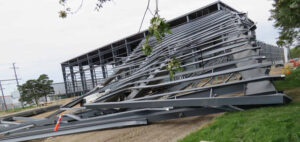In the vast expanse of agricultural landscapes, where crops sway in the breeze and livestock roam freely, the structural integrity of farms often takes a back seat. However, unforeseen events or gradual wear and tear can pose serious threats to the infrastructure of a farm. This is where forensic structural engineering comes into play, unraveling the mysteries behind structural failures and providing crucial insights for farmers. In this comprehensive blog post, we will delve into the various scenarios when a farm might need the expertise of forensic structural engineers.
Understanding Forensic Structural Engineering
Forensic structural engineering involves the investigation of structural failures, defects, or damages to determine their causes. It combines engineering principles with investigative techniques to analyze and interpret evidence related to structural issues. In the context of farms, this specialized field becomes essential for ensuring the safety and longevity of agricultural infrastructure.
Common Triggers for Structural Issues on Farms
Natural Disasters
Nature, with all its beauty, can unleash powerful forces that put farm structures at risk. From earthquakes and floods to hurricanes and tornadoes, farms are vulnerable to a range of natural disasters. Forensic structural engineering plays a crucial role in assessing the damage caused by such events and devising strategies for rebuilding and fortifying structures to withstand future disasters.
Aging Infrastructure
Many farms boast structures that have stood the test of time, but with age comes wear and tear. Barns, silos, and storage facilities can deteriorate over the years, compromising their structural integrity. Forensic structural engineers can conduct thorough inspections, identifying areas of concern and recommending repairs or reinforcements to extend the lifespan of these essential structures.
Accidents and Collisions
Farms are bustling environments with heavy machinery, vehicles, and livestock. Accidents and collisions can occur, leading to structural damage. Whether it’s a collision between tractors, a runaway vehicle crashing into a barn, or any other unexpected event, forensic structural engineering can determine the extent of the damage and propose solutions for restoration.
Poor Construction Practices
In some cases, structural issues arise due to inadequate construction practices. Poorly designed or constructed buildings may not withstand the rigors of farm life. Forensic structural engineers can investigate these issues, identifying construction flaws and recommending corrective measures to ensure that future structures are built to withstand the unique demands of agricultural settings.
The Forensic Structural Engineering Process
When a farm faces structural challenges, the forensic structural engineering process unfolds in a series of systematic steps:
Preliminary Assessment: Engineers conduct an initial assessment to understand the nature and extent of the structural issues.
Site Investigation: Detailed on-site investigations are carried out to gather evidence and data regarding the failure or damage.
Laboratory Analysis: In some cases, samples are analyzed in laboratories to determine the properties of materials used in construction.
Computer Modeling: Advanced computer modeling helps simulate the structural behavior and aids in understanding failure mechanisms.
Expert Analysis: Forensic structural engineers use their expertise to analyze data, draw conclusions, and provide recommendations for remediation.
Case Studies: Real-Life Examples
To illustrate the importance of forensic structural engineering in agriculture, let’s explore a few real-life case studies where this expertise made a significant impact:
Case Study 1: Post-Hurricane Structural Assessment
After a hurricane swept through a farming community, several structures were damaged. Forensic structural engineers were called in to assess the extent of the damage, prioritize reconstruction efforts, and recommend resilient design improvements to mitigate future storm-related risks.
Case Study 2: Aging Barn Restoration
A historic barn on a farm showed signs of deterioration, threatening its stability. Forensic engineers conducted a thorough inspection, identifying areas requiring reinforcement and proposing restoration measures. This not only preserved a piece of agricultural history but also ensured the safety of the farm’s operations.
Case Study 3: Livestock Facility Accident
An accidental collision within a livestock facility resulted in structural damage. Forensic structural engineers determined the cause of the collision, assessed the structural damage, and provided recommendations for repairs. This helped the farm resume normal operations swiftly and safely.
Conclusion
In the realm of agriculture, where resilience is key, forensic structural engineering emerges as a vital tool for safeguarding farm infrastructure. Whether facing the aftermath of natural disasters, addressing the challenges of aging structures, or responding to unforeseen accidents, the expertise of forensic engineers ensures that farms can continue to thrive in a secure and sustainable manner. As farms evolve to meet the demands of the future, the role of forensic structural engineering becomes increasingly integral, preserving the backbone of agriculture for generations to come.


